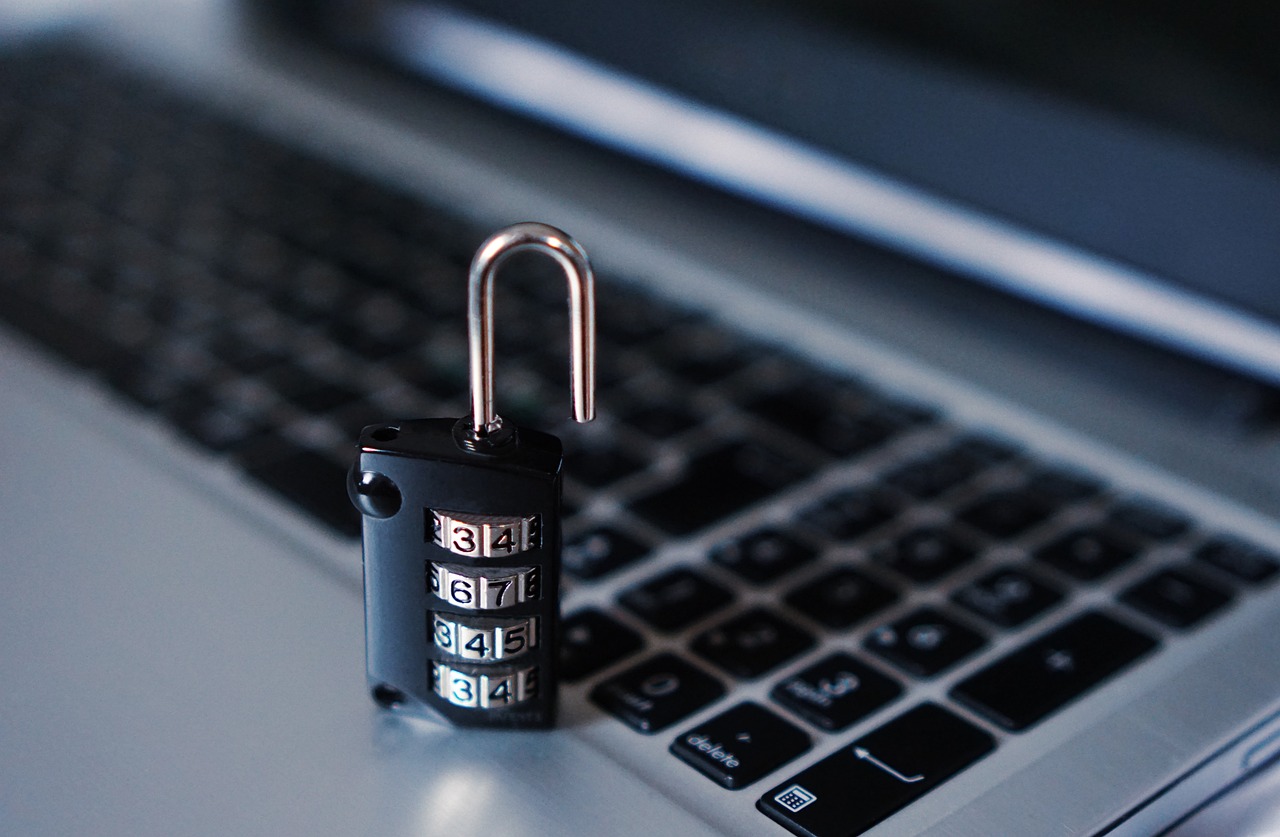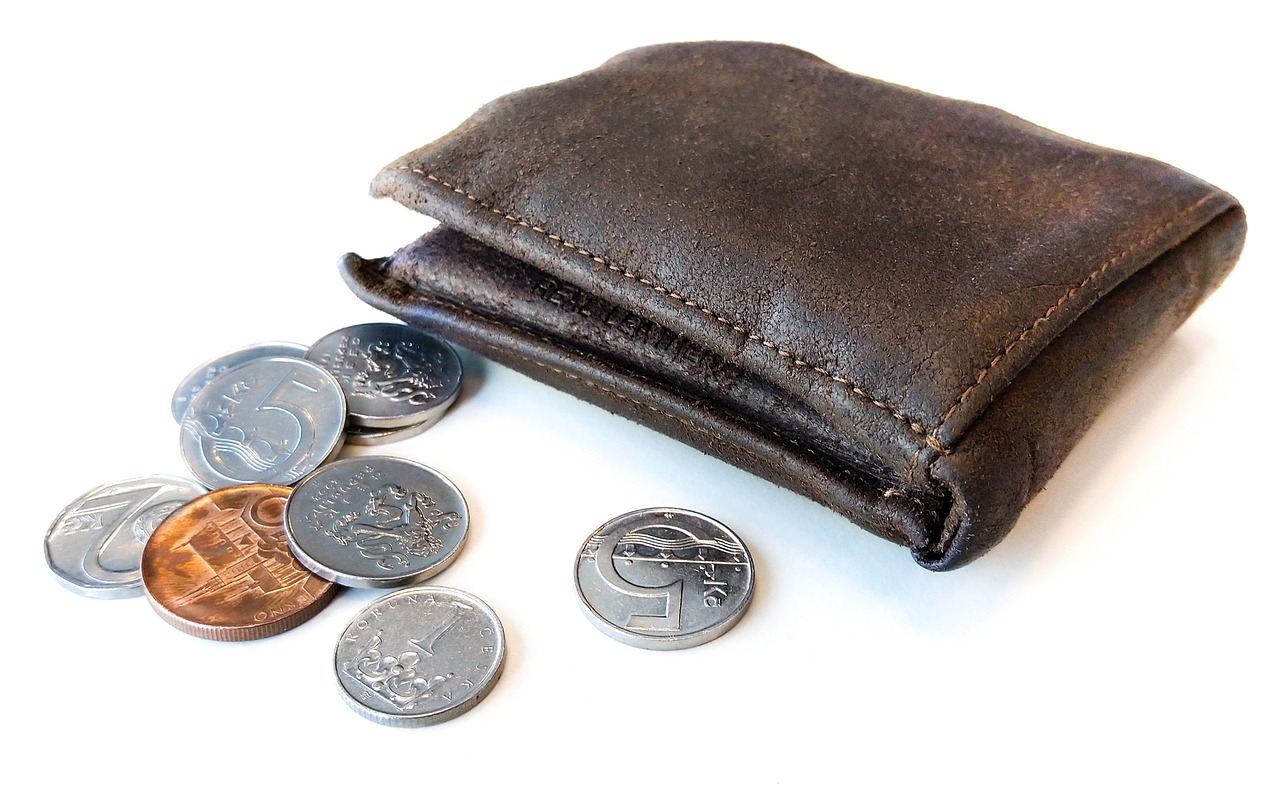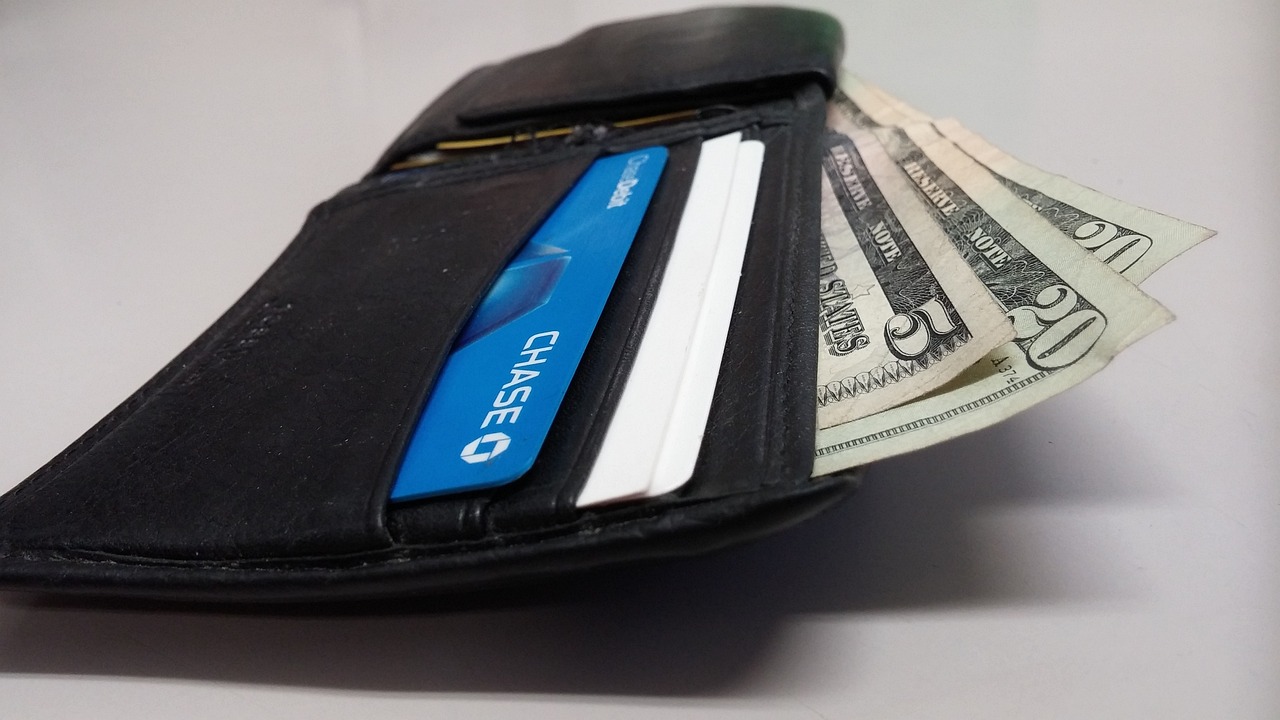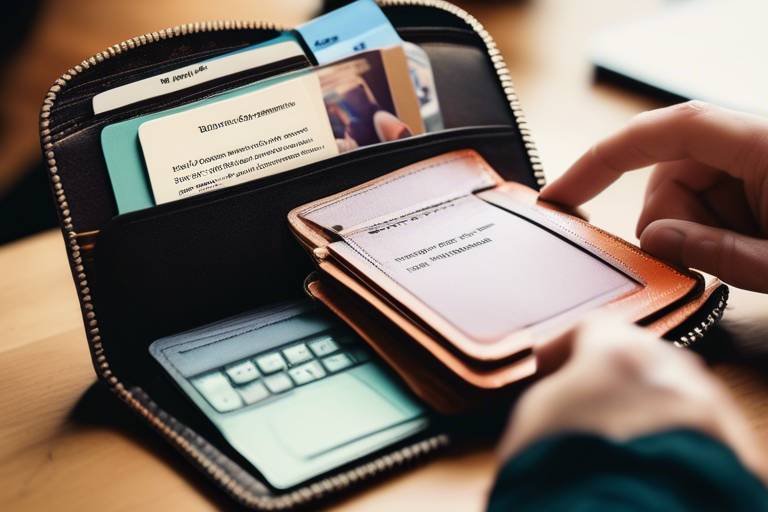How to Build Trust in a New Crypto Wallet Provider
In the ever-evolving world of cryptocurrency, trust is the bedrock upon which successful wallet providers are built. With countless options available, users are often left wondering which wallet can truly safeguard their digital assets. So, how can a new crypto wallet provider establish that all-important trust? The answer lies in a multifaceted approach that encompasses security measures, user experience, transparency, and community engagement.
First and foremost, let's talk about security. In an arena where the stakes are high and the risks are real, users need to feel confident that their investments are protected. Imagine walking into a bank that has no security cameras, no vault, and no alarms—would you trust it with your life savings? Similarly, a crypto wallet provider must implement robust security features such as two-factor authentication, encryption, and regular security audits to reassure users that their assets are safe.
Next up is user experience. The interface of a wallet can make or break a user’s trust. A clunky, confusing design can lead to frustration and, worse, mistakes that could cost users their funds. Think about it: if you’re trying to navigate a maze blindfolded, you’re likely to stumble and fall. A wallet that prioritizes intuitive design and a seamless user experience can guide users through the complexities of cryptocurrency with ease. This is especially important for newcomers who might feel overwhelmed by the technology.
Security is paramount in the crypto world. For a wallet provider, implementing critical security features is not just a recommendation; it's a necessity. Users need to know that their funds are protected against hacking, fraud, and other cyber threats. Key security features include:
- Multi-signature support: This requires multiple keys to authorize a transaction, adding an extra layer of security.
- Cold storage: Keeping most of the assets offline reduces the risk of online theft.
- Regular security audits: Periodic checks can identify vulnerabilities before they are exploited.
A seamless user experience can enhance trust in a wallet provider. Here, we delve into the significance of intuitive design and user-friendly interfaces that cater to both novice and experienced users. A wallet that makes it easy to send, receive, and manage assets will naturally foster a sense of reliability among its users.
Effective onboarding processes are crucial for user retention. When users first interact with a wallet, their initial experience can dictate their long-term trust. A clear, informative onboarding process that guides users through the setup and functionality of the wallet can help them feel more secure and confident in using a new wallet. Imagine being warmly welcomed into a new community versus being thrown into the deep end without a lifebuoy—one fosters trust, while the other breeds anxiety.
Providing educational resources empowers users to make informed decisions. Wallet providers can enhance user understanding and trust by offering tutorials, FAQs, and guides. A well-informed user is more likely to trust the wallet provider and feel confident in managing their assets. Think of it as handing users a roadmap in a foreign city; it helps them navigate with ease.
Responsive customer support is vital for addressing user concerns. When users encounter issues, they need to feel that their wallet provider is just a click away. Offering multiple support channels—like live chat, email, and social media—ensures that users can get help when they need it. This availability builds trust and ensures user satisfaction, making them feel valued and secure.
User feedback and reviews play a significant role in establishing credibility. Positive testimonials can act as powerful endorsements, while constructive criticism can provide valuable insights for improvement. By actively soliciting and responding to feedback, wallet providers can demonstrate their commitment to user satisfaction, further enhancing trust.
Transparency fosters trust in any service. Clear communication regarding fees, security measures, and company policies is essential for building a trustworthy relationship with users. When users feel that they are being kept in the loop, they are more likely to trust the provider. Regular updates about changes or improvements can also maintain an open dialogue between the provider and its users.
Keeping users informed about updates and improvements is essential. Regular communication about new features or security enhancements can bolster user trust. When users see that a wallet provider is continually evolving and enhancing their services, it reassures them that their needs are being prioritized.
Engaging with the crypto community is vital for building trust. Active participation in forums and social media can help wallet providers connect with users and address concerns effectively. By being present in the community, providers can not only gather feedback but also create a sense of belonging among users, which is crucial in fostering trust.
1. What security features should I look for in a crypto wallet?
Look for multi-signature support, cold storage options, and regular security audits.
2. How can I ensure a wallet provider is trustworthy?
Check user reviews, feedback, and the provider's transparency regarding fees and security measures.
3. What should I do if I encounter issues with my wallet?
Reach out to customer support through the available channels, such as live chat or email.
4. Are educational resources important for new users?
Absolutely! Tutorials and guides can help new users navigate the complexities of cryptocurrency.

The Importance of Security Features
In the ever-evolving landscape of cryptocurrency, security features are not just an option; they are a necessity. With the rise in cyber threats and the increasing sophistication of hackers, users must feel confident that their assets are protected when they choose a new crypto wallet provider. Imagine placing your hard-earned money in a bank that has no locks on its doors—would you feel safe? The same principle applies to crypto wallets. A wallet provider must implement robust security measures to foster trust and ensure the safety of user funds.
First and foremost, the implementation of two-factor authentication (2FA) is crucial. This added layer of security requires users to provide two forms of identification before accessing their accounts, making it significantly harder for unauthorized users to gain access. Additionally, encryption plays a vital role in safeguarding sensitive data. When users know their information is encrypted, they can breathe a little easier, knowing that even if a hacker intercepts their data, it remains unreadable.
Another essential feature is the use of multi-signature wallets. These wallets require multiple signatures to authorize a transaction, which adds another layer of protection. For example, in a business setting, a transaction might require signatures from both the CEO and the CFO, ensuring that no single individual can unilaterally access the funds. This not only enhances security but also promotes accountability within organizations.
Moreover, wallet providers should prioritize regular security audits. These audits involve assessing the system for vulnerabilities and addressing any potential weaknesses before they can be exploited. Users are more likely to trust a wallet provider that actively seeks to improve its security measures. In fact, according to a recent survey, 78% of users stated that they would be more inclined to use a wallet that undergoes regular security audits.
Lastly, it’s essential for wallet providers to be transparent about their security protocols. Users want to know what measures are in place to protect their assets. By openly communicating the security features, providers can build a strong foundation of trust. For instance, a wallet provider might create a dedicated section on their website that outlines their security measures, including 2FA, encryption, and audit processes. This not only informs users but also reassures them that their assets are in safe hands.
In conclusion, the importance of security features in a crypto wallet cannot be overstated. Without them, users are left vulnerable to cyber threats, and trust in the wallet provider diminishes. By implementing strong security measures, maintaining transparency, and actively engaging in security audits, wallet providers can foster a sense of confidence among their users. After all, in the world of cryptocurrency, trust is the currency that holds everything together.

User Experience and Interface Design
When it comes to crypto wallets, user experience (UX) and interface design are not just nice-to-haves; they are essential components that can make or break a user's trust in a wallet provider. Imagine walking into a store where everything is cluttered, the signs are confusing, and you can’t find what you need. Frustrating, right? The same principle applies to digital wallets. A seamless and intuitive interface can significantly enhance user confidence, making them feel more secure about their assets.
One of the first things users notice is how easy it is to navigate the wallet. A well-designed interface should allow users to perform essential tasks—like sending, receiving, and managing their cryptocurrencies—without any hurdles. It’s all about creating a fluid experience that makes users feel in control. Think of it like driving a car: if the controls are intuitive and responsive, you’ll feel more confident behind the wheel. In the same vein, a wallet that prioritizes UX will encourage users to explore its features without fear of making mistakes.
Moreover, onboarding processes play a crucial role in establishing trust. A clear and informative onboarding experience can help users feel at ease. For instance, providing a step-by-step guide on how to set up their wallet, complete with visuals and explanations, can demystify the process. Users often appreciate when they are walked through the initial setup, as it reduces anxiety about security and usability. Here’s a quick overview of what an effective onboarding process might include:
| Onboarding Element | Description |
|---|---|
| Step-by-Step Guide | Clear instructions with visuals to help users set up their wallet. |
| Security Tips | Information on how to keep their assets safe, like enabling two-factor authentication. |
| Feature Highlights | Showcasing key features of the wallet to enhance user understanding. |
In addition to onboarding, educational resources are a powerful tool for fostering trust. By providing tutorials, FAQs, and guides, wallet providers can empower users to make informed decisions. Imagine trying to assemble a complex piece of furniture without any instructions; it’s daunting! Similarly, users need resources that help them understand how to use their wallets effectively. A well-stocked library of educational materials can be a game-changer, transforming a novice user into a confident crypto holder.
Lastly, let’s not overlook the importance of customer support. Responsive and accessible support channels can significantly enhance user experience. When users know they can reach out for help—whether through live chat, email, or social media—they feel more secure in their choice of wallet. Just like having a reliable friend to call when you're in a jam, good customer support builds confidence and trust. It assures users that they are not alone in their crypto journey.
In summary, the design and user experience of a crypto wallet are pivotal in building trust. By focusing on intuitive navigation, effective onboarding, educational resources, and robust customer support, wallet providers can create an environment where users feel secure and valued. After all, in the world of cryptocurrency, trust is everything!
- What makes a good user experience in a crypto wallet? A good user experience is characterized by intuitive navigation, responsive design, and helpful onboarding processes that guide users through the wallet's features.
- How important is customer support for crypto wallets? Customer support is crucial as it provides users with the reassurance that they can get help when needed, enhancing their overall trust in the wallet provider.
- Can educational resources improve user trust? Absolutely! Educational resources empower users to understand how to use their wallets effectively, which can significantly enhance their confidence and trust in the platform.

Onboarding Processes
When it comes to establishing trust in a new crypto wallet provider, the onboarding process plays a pivotal role. Think of it as the first handshake between the user and the wallet—if it’s firm and confident, it sets the stage for a fruitful relationship. An effective onboarding process should prioritize clarity and simplicity, ensuring that users, regardless of their experience level, feel comfortable navigating the new environment. This is crucial because, let's face it, the crypto world can be daunting, especially for newcomers. If users feel lost or overwhelmed during their initial interactions, they may abandon the wallet altogether, which is the last thing any provider wants.
To create an onboarding experience that resonates, wallet providers should focus on a few key elements. First, a well-structured tutorial can guide users through the essential features of the wallet. This could be a series of pop-up tips or a dedicated walkthrough video. Imagine stepping into a new city: a guided tour can make all the difference in helping you find your way and feel at ease. Similarly, a comprehensive onboarding tutorial can empower users, making them feel in control and informed.
Moreover, incorporating interactive elements can enhance the onboarding experience. For instance, consider using quizzes or interactive checklists that allow users to confirm their understanding of key concepts, such as how to secure their wallet or how to perform transactions. This not only makes learning engaging but also reinforces their knowledge and confidence in using the wallet. After all, who doesn’t love a little gamification?
Another vital aspect is the availability of educational resources. A dedicated section for FAQs, tutorials, and guides can significantly bolster user confidence. When users know they have access to reliable information, they are less likely to feel anxious about making mistakes. Additionally, providing these resources in multiple formats—like videos, articles, and infographics—can cater to different learning styles, ensuring that everyone can grasp the necessary information. It’s like having a toolbox filled with different tools; you’ll always find the right one for the job!
Finally, let’s not overlook the importance of user feedback during the onboarding process. Encouraging new users to share their thoughts on their experience can provide invaluable insights for wallet providers. This feedback loop not only helps to refine the onboarding process but also shows users that their opinions matter. This kind of engagement fosters a sense of community and trust, making users feel valued and heard.
In summary, a well-executed onboarding process can significantly enhance user trust in a new crypto wallet provider. By focusing on clarity, interactive elements, educational resources, and user feedback, wallet providers can create an environment where users feel secure and supported from the very beginning.
- What is an onboarding process in a crypto wallet?
The onboarding process refers to the series of steps that new users go through to set up and familiarize themselves with a crypto wallet. It includes tutorials, educational resources, and initial setup guidance.
- Why is onboarding important?
Onboarding is crucial because it helps users feel comfortable and informed about using the wallet. A smooth onboarding experience can lead to higher user retention and satisfaction.
- How can wallet providers improve their onboarding process?
Wallet providers can improve onboarding by creating clear tutorials, offering interactive elements, providing diverse educational resources, and actively seeking user feedback.

Educational Resources
In the rapidly evolving world of cryptocurrency, education is not just a luxury; it’s a necessity. For new users navigating the complexities of crypto wallets, having access to comprehensive educational resources can significantly enhance their confidence and trust in a wallet provider. Think of it like learning to ride a bike; without proper guidance and knowledge, you might wobble and fall, but with the right instructions, you can cruise smoothly.
Wallet providers should prioritize the creation of a diverse range of educational materials that cater to users at all levels. Here are some key components that can make a significant impact:
- Tutorial Videos: Engaging video content can simplify complex concepts, making them more digestible. Short, clear tutorials can guide users through the setup process, security features, and transaction methods, ensuring they feel competent and secure.
- FAQs: A well-structured Frequently Asked Questions section can address common concerns and misconceptions. This not only saves users time but also empowers them with knowledge about the wallet’s functionalities and security measures.
- Guides and Articles: Comprehensive written guides covering topics from basic wallet usage to advanced security practices can be invaluable. These resources should be easy to navigate and regularly updated to reflect the latest trends and security protocols in the crypto space.
Additionally, integrating an interactive element, such as quizzes or webinars, can further enhance the learning experience. By actively engaging users, wallet providers can create a community of informed individuals who are more likely to trust the platform. The more users understand how to protect their assets and utilize the wallet effectively, the more they will feel at ease trusting the provider with their investments.
Moreover, educational resources should not only focus on the wallet itself but also on broader topics in cryptocurrency, such as market trends, security best practices, and regulatory updates. This holistic approach positions the wallet provider as a thought leader in the space, fostering a deeper connection with users. When users see a wallet provider taking the initiative to educate them, it builds a foundation of trust that is hard to shake.
In conclusion, by investing in robust educational resources, wallet providers can transform the user experience from one of uncertainty to empowerment. This not only enhances user satisfaction but also cultivates a loyal user base that feels valued and informed. After all, in the world of crypto, knowledge is power, and the more power users have, the more they’ll trust their wallet provider.
Here are some common questions users may have regarding educational resources for crypto wallets:
- What types of educational resources should I look for in a crypto wallet provider? Look for tutorial videos, FAQs, guides, and interactive content that cater to different learning styles.
- How often should educational materials be updated? Educational materials should be updated regularly to reflect the latest trends and security measures in the crypto space.
- Can educational resources really impact my trust in a wallet provider? Absolutely! The more informed you are, the more confident you will feel in using the wallet.

Customer Support Availability
When diving into the world of cryptocurrencies, one of the most critical aspects to consider is the availability of customer support. Imagine this: you’ve just made your first investment in Bitcoin, and suddenly you can’t access your wallet. Panic sets in, right? This is where responsive and reliable customer support comes into play. A strong support system can be the difference between a smooth sailing experience and a disastrous one.
Wallet providers must recognize that users come from diverse backgrounds and possess varying levels of technical expertise. Therefore, having a robust customer support system is not just a luxury; it’s a necessity. Here are some key elements that contribute to effective customer support:
- Multiple Support Channels: Offering various channels such as live chat, email, and phone support ensures users can reach out in a way that suits them best. Each channel should be staffed with knowledgeable representatives who can provide quick and accurate assistance.
- 24/7 Availability: The crypto market operates around the clock, so having support available 24/7 can alleviate user concerns, especially when they face issues outside regular business hours.
- Response Time: Users should not have to wait endlessly for answers. A commitment to quick response times can significantly enhance user confidence.
Moreover, it’s essential for wallet providers to maintain an extensive knowledge base or help center. This should include FAQs, troubleshooting guides, and step-by-step tutorials. Users often prefer to find answers on their own, and a well-organized help center can empower them to do just that.
In addition to these features, wallet providers should actively solicit feedback regarding their support services. This can be achieved through surveys or follow-up emails after a support interaction. By understanding user experiences and pain points, providers can continuously improve their support systems, ensuring that they meet the evolving needs of their clientele.
Ultimately, a wallet provider that prioritizes customer support not only fosters trust but also builds a loyal user base. It’s about creating a safety net for users, making them feel secure and valued. When users know they can rely on their wallet provider for assistance, they are more likely to engage with the platform, invest more, and recommend it to others.

Feedback and Reviews
When it comes to selecting a new crypto wallet provider, user feedback and reviews serve as invaluable resources that can significantly influence potential clients' decisions. Imagine you're shopping for a new gadget; wouldn’t you want to hear what others have experienced before making that leap? In the world of cryptocurrency, where the stakes are high and trust is paramount, the voices of existing users can either make or break a wallet provider's reputation.
Positive testimonials can act as a powerful endorsement, showcasing the strengths of a wallet provider. For instance, if users rave about the wallet's security features or the ease of use, it creates a ripple effect of confidence among prospective users. On the flip side, negative reviews can serve as cautionary tales, highlighting potential pitfalls and issues that new users might encounter. This duality is crucial for anyone considering a new wallet, as it paints a comprehensive picture of what they can expect.
Furthermore, the way a wallet provider responds to feedback is equally telling. A company that actively engages with its users—acknowledging both praise and criticism—demonstrates a commitment to improvement and user satisfaction. For example, consider a situation where a user reports a bug or a security concern. If the wallet provider promptly addresses the issue and communicates the resolution to all users, it not only builds trust but also shows that they value their customers' input.
To further illustrate this point, let’s take a look at a hypothetical table summarizing user feedback on two different wallet providers:
| Wallet Provider | Positive Feedback | Negative Feedback | Overall Rating |
|---|---|---|---|
| Wallet A | Excellent security, user-friendly interface | Slow customer support response | 4.5/5 |
| Wallet B | Great educational resources, responsive support | Frequent bugs reported | 3.5/5 |
This table highlights how Wallet A, despite having a minor drawback, is still perceived favorably due to its strong security and usability. Meanwhile, Wallet B, despite its strengths, suffers from a lower rating because of reported bugs. Such comparisons can help potential users make informed decisions based on real experiences.
In conclusion, feedback and reviews are not just mere words; they are the lifeblood of trust in the crypto wallet space. They provide insights into a provider's reliability and user satisfaction. As you navigate the often tumultuous waters of cryptocurrency, remember to pay attention to what others are saying. After all, their experiences could very well guide you to your ideal wallet provider.
- How can I find reliable reviews for crypto wallets? Look for reviews on reputable crypto forums, social media platforms, and dedicated review websites.
- What should I do if I encounter negative feedback? Analyze the feedback for common themes, and consider how the wallet provider has addressed these concerns.
- Are all positive reviews trustworthy? Not necessarily; always cross-reference multiple sources to get a balanced view.
- How important is customer support in reviews? Extremely important! Good customer support can be a game-changer in resolving issues quickly.

Transparency and Communication
In the ever-evolving landscape of cryptocurrency, transparency is not just a buzzword; it's a crucial pillar that supports user trust. When users engage with a new crypto wallet provider, they want to feel confident that their assets are secure and that they are not stepping into a murky world filled with hidden fees and unclear policies. So, how can wallet providers ensure they communicate clearly and openly with their users? The answer lies in establishing a culture of transparency that permeates every aspect of their service.
First and foremost, wallet providers should prioritize clear communication regarding fees and charges. Users appreciate knowing exactly what they are paying for and how those fees are structured. A well-structured fee schedule, presented in an easy-to-understand format, can go a long way in building trust. Consider using a
| Fee Type | Description | Amount |
|---|---|---|
| Transaction Fee | Fee charged for processing transactions | 0.5% of transaction amount |
| Withdrawal Fee | Fee for withdrawing funds from the wallet | 0.0005 BTC |
| Exchange Fee | Fee for exchanging one cryptocurrency for another | 1% of exchange amount |
Moreover, wallet providers should maintain open lines of communication about their security measures. Users want to know that their funds are protected against potential threats. Regular updates on security protocols, such as two-factor authentication and encryption practices, can reassure users that their assets are in safe hands. This proactive approach not only fosters trust but also encourages users to engage more deeply with the platform.
Another vital aspect of transparency is the need for wallet providers to communicate their company policies clearly. This includes everything from privacy policies to terms of service. If users can easily access and understand these documents, they are more likely to feel secure in their decision to use a particular wallet. A dedicated section on the website that outlines these policies in simple language, perhaps even with a
- of key points, can make a significant difference:
- Privacy Policy: We do not sell your data to third parties.
- Terms of Service: Clear guidelines on user responsibilities.
- Refund Policy: Information on how refunds are handled.
- Why are regular updates important for crypto wallets? Regular updates ensure security, improve user experience, and demonstrate a provider's commitment to their users.
- How can I stay informed about updates from my wallet provider? Most wallet providers communicate updates through newsletters, social media, or their official websites.
- What should I do if I notice a security issue? Immediately report it to your wallet provider’s customer support and follow their guidance for securing your assets.
- Social Media Interactions: Regular updates, Q&A sessions, and engaging content on platforms like Twitter, Reddit, and Discord can foster a strong sense of community.
- Forums and Discussion Boards: Actively participating in crypto forums allows wallet providers to address user concerns, answer questions, and gather valuable insights on user needs.
- Community Events: Hosting webinars, AMAs (Ask Me Anything), and even local meetups can enhance user trust and loyalty.
- Why is community engagement important for crypto wallet providers?
Community engagement helps build trust, provides valuable feedback, and creates a sense of belonging among users. - How can users participate in community discussions?
Users can participate through social media platforms, forums, and community events organized by wallet providers. - What are some effective ways wallet providers can engage with their communities?
Wallet providers can use social media, host webinars, and create forums for discussions to engage with their users effectively. - What security features should I look for in a crypto wallet?
When choosing a crypto wallet, prioritize features like two-factor authentication, encryption, and multi-signature support. These elements are crucial for safeguarding your assets and ensuring that only you have access to your funds.
- How can I ensure a user-friendly experience with a new wallet provider?
Look for wallets that offer intuitive interfaces and clear onboarding processes. A wallet that guides you through its features and allows easy navigation will make your experience much smoother, whether you're a beginner or a seasoned user.
- What types of educational resources should a wallet provider offer?
A good wallet provider should offer tutorials, FAQs, and guides that help users understand how to use the wallet effectively. These resources empower users to make informed decisions and feel more secure in managing their crypto assets.
- Why is customer support important for a crypto wallet?
Responsive customer support is essential because it addresses user concerns promptly. Whether through live chat, email, or phone support, having multiple channels available ensures users can get help when they need it, which builds trust.
- How do user reviews influence my choice of a wallet provider?
User feedback and reviews can significantly impact your perception of a wallet provider. Positive testimonials can enhance credibility, while constructive criticism can highlight areas for improvement, helping you make a more informed choice.
- What does transparency in a wallet provider look like?
Transparency involves clear communication about fees, security measures, and company policies. A trustworthy wallet provider will openly share this information, allowing users to understand what they are getting into.
- How often should a wallet provider update users on new features?
Regular updates are crucial. A good wallet provider should communicate about new features or security enhancements on a consistent basis, keeping users informed and engaged, which ultimately strengthens trust.
- Why is community engagement important for wallet providers?
Engaging with the crypto community through forums and social media allows wallet providers to connect with users directly. This involvement helps address concerns, gather feedback, and build a loyal user base.
Finally, engaging with users through regular updates and community discussions can enhance transparency. When wallet providers share news about upcoming features, security enhancements, or even challenges they are facing, they create a sense of partnership with their users. This kind of communication can be done through newsletters, blog posts, or social media updates, allowing users to feel involved in the evolution of the service they are using.
In conclusion, transparency and communication are essential for building trust in a new crypto wallet provider. By being open about fees, security measures, and company policies, and by engaging with users regularly, wallet providers can foster a strong, trusting relationship with their clientele. The crypto space is still relatively young, and establishing trust can be the deciding factor for users when choosing a wallet. So, let’s embrace transparency and pave the way for a more trustworthy crypto ecosystem!

Regular Updates and Improvements
In the fast-paced world of cryptocurrency, are essential for maintaining user trust and ensuring the security of assets. Imagine using a wallet that rarely updates its software; it would be like driving a car that hasn’t been serviced in years — both risky and potentially disastrous. Wallet providers must prioritize consistent updates to their systems, addressing any vulnerabilities that may arise and enhancing their features to meet user expectations.
When users see that a wallet provider is committed to regularly enhancing their platform, it instills a sense of confidence. They feel assured that their investments are protected and that the provider is actively working to improve their experience. This is particularly important in an industry where security breaches can lead to significant financial losses. Regular updates not only fix bugs and vulnerabilities but also introduce new features that can make the wallet more user-friendly and efficient.
Moreover, communication is key. Wallet providers should keep their users informed about what these updates entail. This can be done through various channels, such as newsletters, blog posts, or social media updates. For instance, when a new security feature is implemented, a detailed explanation of how it works and why it’s beneficial can go a long way in reassuring users. It’s like a chef explaining the ingredients of a new dish; when diners understand what they’re consuming, they’re more likely to enjoy it and trust the chef’s expertise.
To illustrate the importance of regular updates, let’s consider the following table that highlights key aspects of effective communication regarding updates:
| Aspect | Description |
|---|---|
| Frequency | Updates should be communicated regularly, not just when issues arise. |
| Clarity | The language used should be simple and easy to understand for all users. |
| Detail | Explain what changes have been made and how they affect users. |
| Feedback | Encourage user feedback on updates to foster a sense of community. |
In addition to updates, wallet providers should focus on gathering user feedback to continuously improve their services. This feedback loop can be invaluable; it allows users to voice their concerns or suggestions, creating a collaborative environment. When users feel that their opinions matter, it strengthens their connection to the wallet provider and enhances their overall trust.
In summary, regular updates and improvements are not just about fixing problems; they are about building a relationship of trust with users. By keeping users informed and involved, wallet providers can create a secure and engaging environment that encourages long-term loyalty. After all, in the world of cryptocurrency, trust is everything.

Community Engagement and Support
In the rapidly evolving world of cryptocurrency, community engagement is more than just a buzzword; it's a cornerstone of building trust with users. When a wallet provider actively participates in discussions, forums, and social media platforms, it creates a sense of belonging and reassurance among its users. Imagine walking into a cozy coffee shop where the barista knows your name and your favorite order. That’s the kind of relationship crypto wallet providers should aim for with their communities.
Engaging with the community allows wallet providers to not only showcase their commitment to transparency but also to address concerns directly. Users appreciate when companies listen to their feedback and act upon it. This can be achieved through various channels:
Moreover, community support is essential for user retention. When users feel they are part of a larger group that shares their interests and concerns, they are more likely to remain loyal to a wallet provider. Think of it as a safety net; knowing that there are others out there who are willing to help and share their experiences can significantly reduce the anxiety associated with using new technology.
In addition, wallet providers can leverage community feedback to improve their services. By creating platforms for users to voice their opinions, companies can gather insights that lead to better user experiences. For instance, if multiple users express concerns about a specific feature, the wallet provider can prioritize addressing that issue, thereby showing that they value user input. This two-way communication not only builds trust but also enhances the overall service quality.
In conclusion, community engagement and support are vital for any crypto wallet provider aiming to establish a trustworthy reputation. By fostering open communication, actively participating in discussions, and valuing user feedback, these providers can create a supportive ecosystem that benefits both the company and its users. After all, in the world of cryptocurrency, trust is everything, and a strong community is the foundation upon which that trust is built.
Here are some common questions users may have about community engagement and support in crypto wallet providers:



















